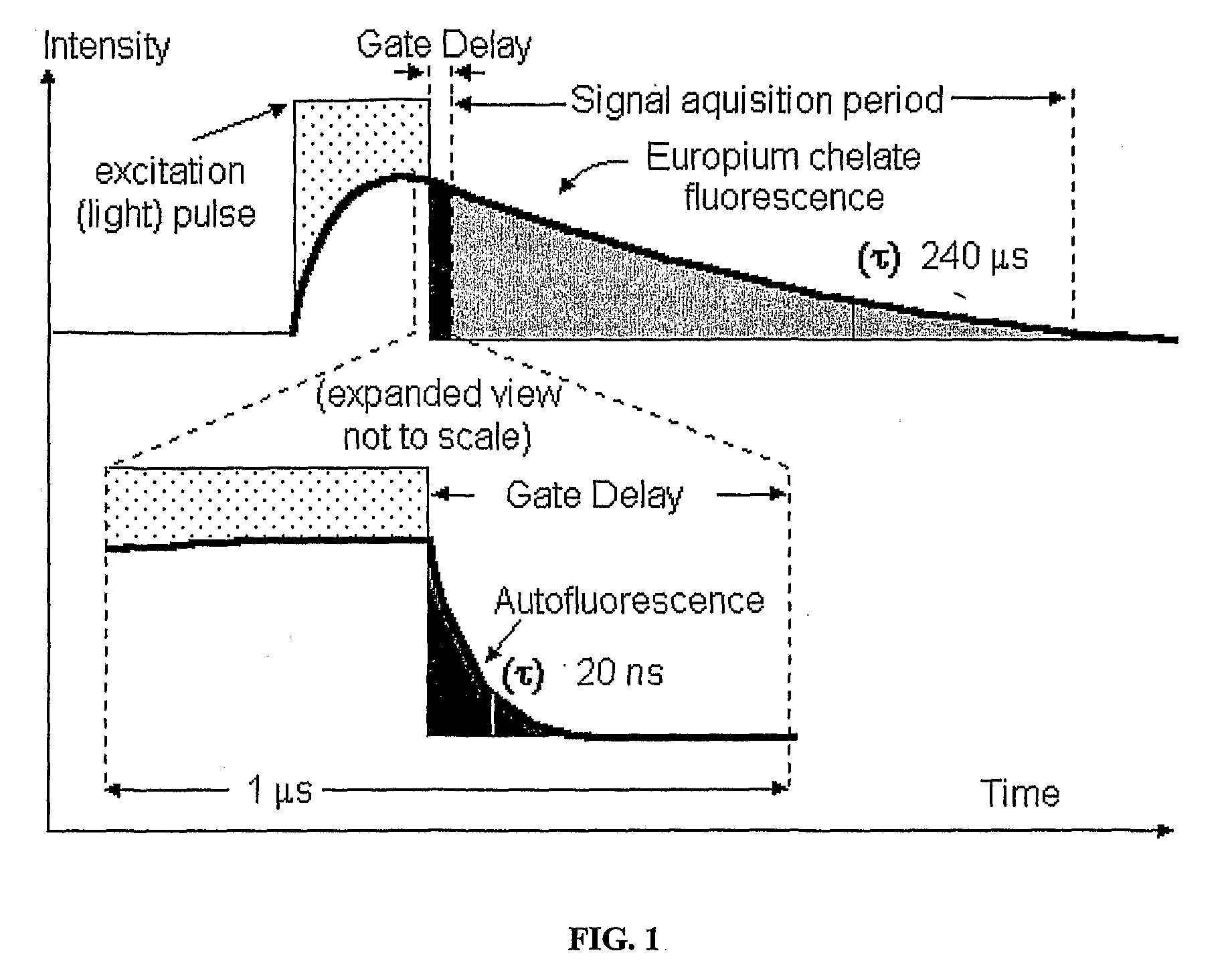Fluorescence Detection
a fluorescence detection and detection system technology, applied in the field of fluorescence detection systems, can solve the problems of difficult detection of rare organisms that may occur in the early stages of infection or in cases where the organisms are generally unculturable, and prolong the gate-delay period
- Summary
- Abstract
- Description
- Claims
- Application Information
AI Technical Summary
Problems solved by technology
Method used
Image
Examples
example
[0152]The recent availability of light emitting diodes (LEDs) that emit at 365 nm (FWHM of 10 nm), prompted evaluation for their suitability in time-resolved fluorescence applications. LEDs are easily powered and have the advantage of nanosecond switching speeds, however the emission wavelength longer than is optimal (337 nm). Nevertheless, a UV LED was employed as the excitation source to replace the flashlamp in a lab-built TRFM. The LED (type NCCU033, rated at 100 mW; Nichia Corp, Japan) was adapted to fit the filter-box housing of a fluorescence microscope (Axioscop; Zeiss Instruments) and used to excite fluorescence from fluorescently labelled Giardia cysts spiked into a 10,000:1 water concentrate that was strongly autofluorescent. The LED was pulsed for a 100 μs duration at a repetition rate of 500 Hz with a peak current of 793 mA. The narrow line width of the LED UV emission enabled removal of the excitation filter and emission filter, resulting in a significant improvement i...
PUM
| Property | Measurement | Unit |
|---|---|---|
| optical output power | aaaaa | aaaaa |
| optical output power | aaaaa | aaaaa |
| fluorescence lifetime | aaaaa | aaaaa |
Abstract
Description
Claims
Application Information
 Login to View More
Login to View More - R&D
- Intellectual Property
- Life Sciences
- Materials
- Tech Scout
- Unparalleled Data Quality
- Higher Quality Content
- 60% Fewer Hallucinations
Browse by: Latest US Patents, China's latest patents, Technical Efficacy Thesaurus, Application Domain, Technology Topic, Popular Technical Reports.
© 2025 PatSnap. All rights reserved.Legal|Privacy policy|Modern Slavery Act Transparency Statement|Sitemap|About US| Contact US: help@patsnap.com



